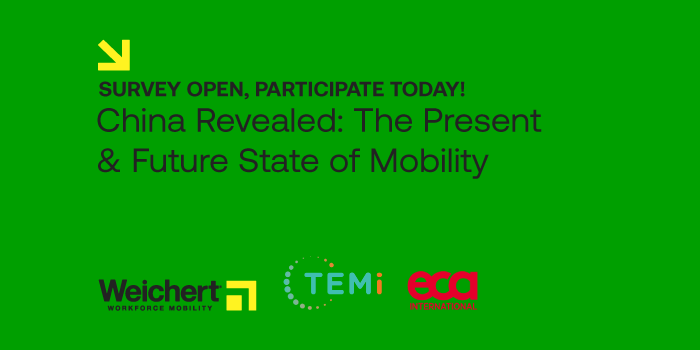
It has been about a year since the economic juggernaut, China, lifted some of the world’s most stringent anti-pandemic measures, suggesting that the country is officially fully open for business. But can we assume that it’s business as usual?
Since joining the World Trade Organization in 2001, China has been a magnet for foreign investment, boasting exponential economic growth and gains in share of global GDP on an unprecedented scale. China-owned companies have become significant participants in the worldwide economy and direct competitors with foreign-owned companies for talent within and beyond China. The country was Asia’s undisputed #1 global mobility destination, with domestic mobility also growing significantly.
Fast-forward to today.
In this post-pandemic world of work, China’s situation appears markedly different. The national economy faces several challenges as GDP and foreign investment growth decline, and geopolitical tensions with the West — especially the US — are at an all-time high.
And yet, nothing threatens China’s position as the world’s second-largest economy. Even if China’s GDP grows at an average of 2% per annum throughout this decade (2021-2030), it would still end the decade with an increase to its economy equivalent to the total sum of the entire economy of India today.
So, while growth may be slowing, the country remains a leading economic player and a critical market for many of today’s most prominent global companies. With limited recent research into this area, we’re left asking: What is the current state of mobility in China, and what are its prospects? Our clients are equally curious, with many – regardless of the move volume they have had historically in this region – enquiring about what their competitors are doing regarding policy, volume size, move types, and challenges in recruiting the necessary talent.
A Distinctly Different Player
Addressing these questions starts by understanding that China’s economic story vastly differs from the ascent of other leading players. Over the past three decades, it experienced what can only be described as blast-furnace-type growth, achieving a scale of sustained growth and increasing global market share over literally a decade. Today, the country accounts for 25-40% of global sales for industry sectors such as automotive, industrial machinery and luxury goods. Another key differentiator is the size and distribution of its market: China has around 113 cities across the country with populations greater than 1 million, differentiated into tiers 1-4 according to their various stages of development. Increasingly, global companies operating in China and China-headquartered companies are involved with talent mobility in some form or another across an ever-greater number of locations in the country.
The fact that the country’s growth trajectory has been distinctly different from its Western counterparts also means predicting future trends has been challenging. This uncertainty is only compounded by the shifting geopolitical climate. The relationship between the US and China turned decidedly thorny with the advent of the Trump administration and has remained so. And the country’s relationship with Europe is becoming equally prickly. Increased talk of ‘China plus one’ strategies — diversifying supply chain reliance away from China — and of ‘decoupling’ – a gradual reduction in economic interdependence — raises additional questions about the actual state of global mobility in the world’s second-largest economy.
Finding Answers in the Data
Our China mobility survey, “China Revealed,” is designed to close the data gap that has developed over the past several years and uncover definitive insights into the current and likely future state of global mobility in China in all its forms: inbound into China, domestically within China, and outbound from China. To target a significant response rate and extend the reach of our survey, we’re partnering with global mobility data provider ECA International and the Australia-based professional association for the global mobility profession, TEMI, in the distribution of this study.
SURVEY NOW OPEN
Participate now and be among the first to receive the results of this valuable study: China Revealed: The Present and Future State of Mobility